GROUP TEST
Thirty years ago the MGF was born into a rejuvenated sports car market. But how does it stack up today?
WORDS MATT TOMKINS & CRAIG CHEETHAM PHOTOGRAPHY JONATHAN JACOB & MAGIC CAR PICS
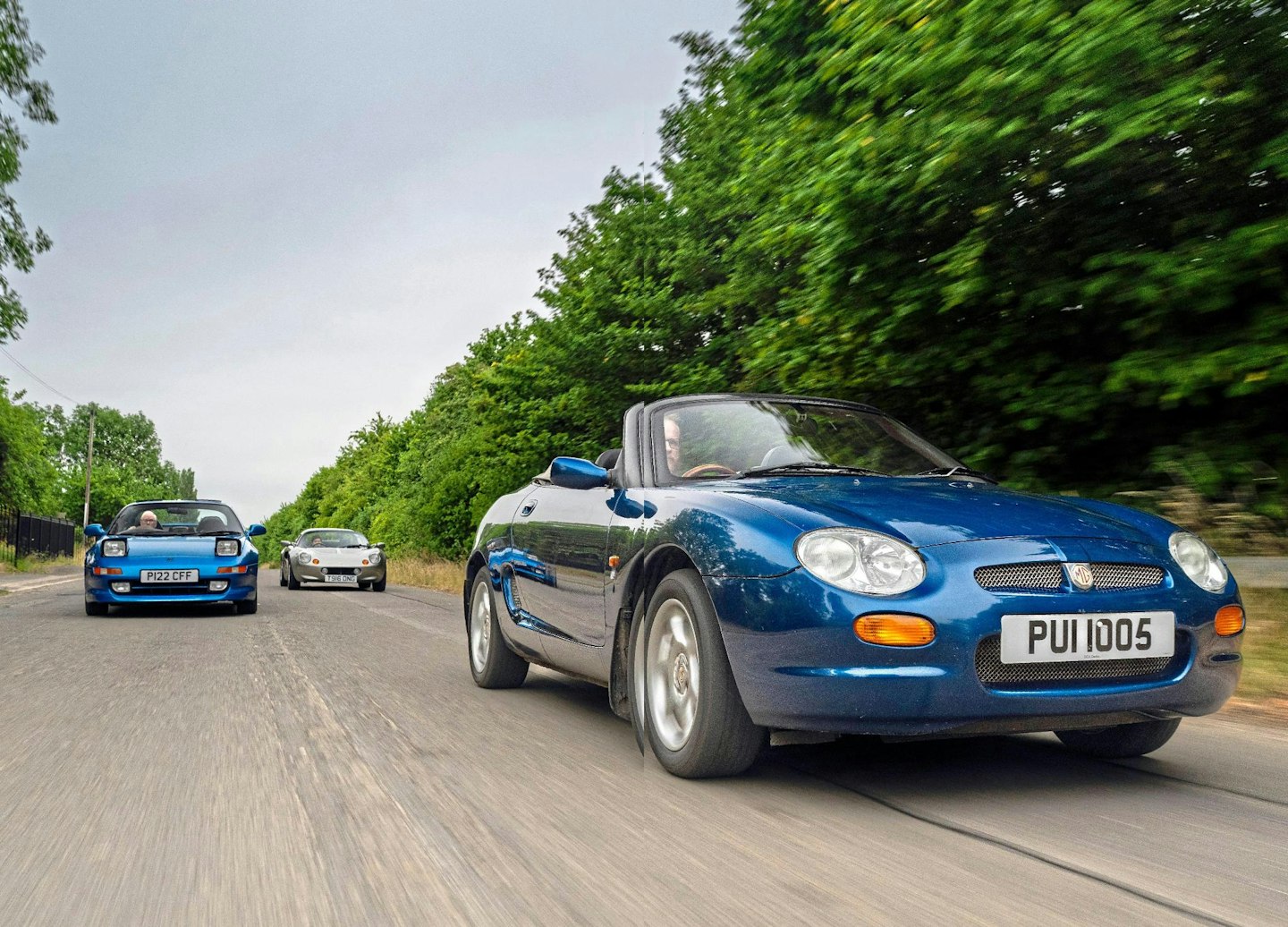
The year is 1995, and the MGF has just been unveiled at the Geneva Motor Show. The new mid-engined sports car from MG tickles your fancy, but there are other mid-engine contenders for your cash. The supreme second-generation Toyota MR2 has already been hoovering up sales for the last five years, while Lotus has just announced its Elise will be in showrooms in the new year – albeit with a chunkier price tag than the MGF.
Three decades on, Practical Classics have gathered together these mid-engined marvels for a rematch. While they were at different price points back then, and continue to be so nowadays, all three continue to represent great value, and all are supported by a wealth of clubs, enthusiasts and specialists making the choice, arguably, even more difficult now than it was in 1995. Which will win our hearts in 2025?
MGF
From its inception, and throughout its development, the MGF was designed as a budget everyday sports car. As I tackle the combination of twisty, bumpy B-roads, A1 corridor and town centre roundabouts en route to our shoot, I’m minded to declare that the team, despite its meagre £40million budget, got it spot on. This is a car I’ve been working on for the past six months, as we here at PC celebrate 30 years since this marvel’s launch, and to be enjoying the fruits of those labours is a joy. Not only is it comfortable thanks to the clever front/rear interconnected Hydragas suspension, but the combination of that composure and quality rubber at each corner inspires confidence. With just over a tonne of mass distributed 45:55 front to rear, the ’F offers a disproportionate level of excitement as each bend is dispatched thanks to the K-series’s readiness to rev, even if this non-VVC 1.8i possesses only a modest 120bhp.
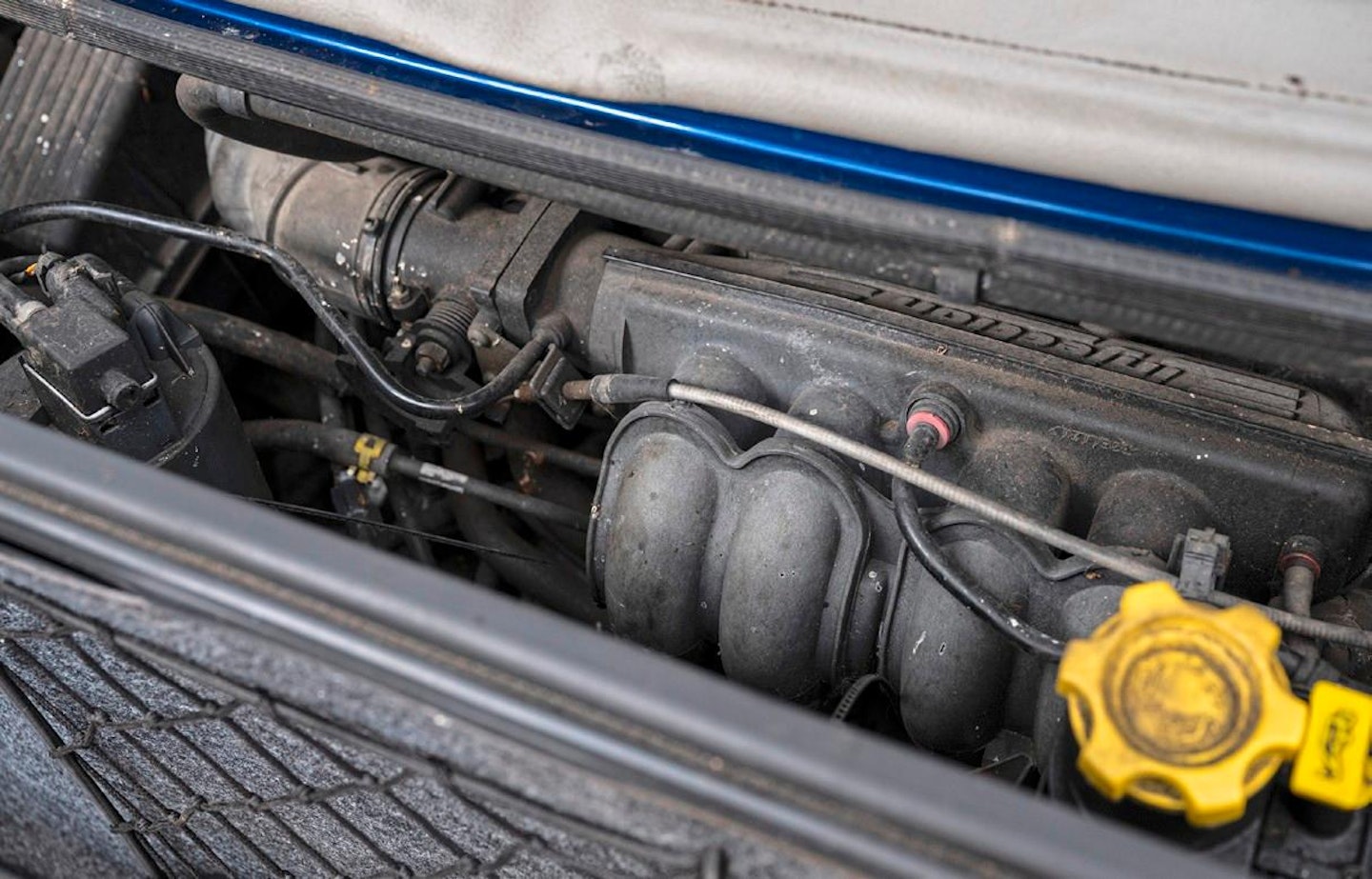
A mere peek at that peppy K-series.
Well supported by both clubs and specialists, there’s little standing in the way of a pleasant ownership experience in 2025. The MGF’s reputation for head gasket-related misery may have kept these cars in bargain basement territory for far too long, but as MG expert Roger Parker attests, ‘Any K-series engined car that has survived until today has long since gone past the perception of regular head gasket failure. Now the frequency is no more than any competitor engine and any ’F will probably have already had one head gasket repair in its lifetime – probably more if the first wasn’t done properly, which many weren’t.’
That famously fragile cooling system, however, remains worthy of note. Although perfectly effective when in good order, it has little in reserve and the consequences of overheating, particularly due to coolant loss, can cause irreparable engine damage. Front to rear cooling pipes are made from mild steel, so corrode, which can result in catastrophic coolant loss. So too can valves meet pistons should the belts not be replaced every 60,000 miles or five years. It’s essential, then, when buying that you get to grips with the paperwork as much as you do the bodywork. Stainless steel coolant pipes can be bought to replace the mild steel originals – a worthwhile upgrade – while the water pump should always be replaced at the same time as the cam belt. Any ‘mayonnaise’ emulsion on the dip stick could denote coolant mixing with the oil. Steer clear.
Bounce each corner of the car and ensure the Hydragas is compliant. If it’s been re-gassed, it should bounce beautifully. Overly stiff or sagging suspension screams that it’s been pumped up with fresh fluid, therefore displacing the lost nitrogen. Inspect the body for crash damage and subframes for corrosion – they were made down to a price and based on Rover 100 items, so can corrode catastrophically if left untreated.

A fighting-fit ’F is a joy to drive, as a well-tickled Matt will attest.
I OWN ONE MATT TOMKINS
The MGF was available with a choice of 1.6, 1.8i and 1.8 VVC engines. I’ve now owned all three, and this is my pick of the bunch, balancing ample power with elegant simplicity. My biggest issue, however, is the R8-derived seats and offset-to-the-left steering wheel that restrict movement for my left leg. Oh, and it could really do with a sports exhaust to really give me the ‘fizz’.

Matt’s non-VVC 1.8i is his favourite ’F so far.
MGF HISTORY FILE
CRAIG CHEETHAM
There had been talk of a new MG sports car ever since the last MGB rolled off the Abingdon production line in 1981, after an astonishing 19-year run. The factory may have closed down, but the brand survived; Austin-Rover keeping the famous octagonal logo on life support, attached to Austin hatchbacks and saloons with red seatbelts.
After several false starts, the MGF was developed on an extremely tight budget after Rover Group’s marketing team persuaded senior management that reviving the idea of an MG sports car was a great idea.
It was a concept that won the immediate buy-in of engineers and designers, who loved the idea of working on a third car as part of its ‘Portfolio’ model regeneration for 1995, alongside the Rover ‘R3’ 200 and ‘HH-R’ 400.
Denis Chick, who was Product Communications Director for Rover Group at the time, recalls the background: ‘A new and “proper” MG sports car had been in discussion since the demise of the Midget and ’B, so when (chief engineer) Nick Fell pulled together a small team with a tight budget to produce a new one, we held our breath,’ Denis told us.
‘Could we afford it, would it live up to the brand values so carefully honed for 70 years, would it really handle? The answer was to innovate, turning a Metro subframe back to front for example, and make the very best use of the Rover Group parts bin. The result was a car that was nimble, powerful and looked ‘MG’, but contemporary with its mid-engined configuration.’
The uprated 1.8 K-series was a godsend. The development team shamelessly cribbed it from Land Rover, which had been given the budget to develop it for the still-secret Freelander. Rover’s engineers, meanwhile, developed a new cylinder head with variable valve timing – creating the 148bhp ‘VVC’ unit – making the MGF genuinely exciting in its most powerful form.
It spent seven years on sale before being replaced by the coil-sprung TF and was the UK’s best-selling sports car for the entirety of its life. The amount of love for the MGF at its recent 30th birthday party proves it’s one of the most popular Nineties classics – and so it should be!
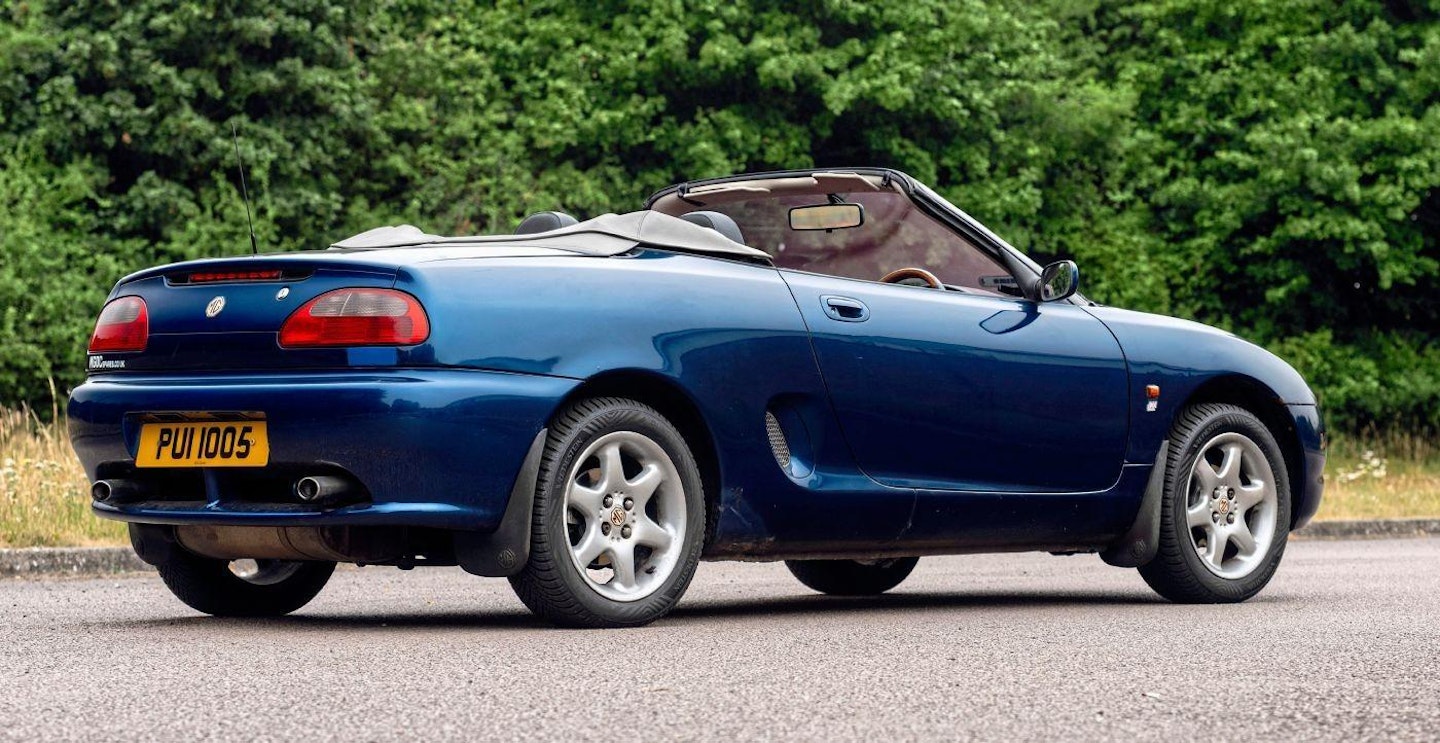
MG’s approach was innovative and brave – and the results can still be savoured 30 years later.
1999 MGF 1.8i
Engine 1796cc/4-cyl/DOHC
Power 118bhp@5500rpm
Torque 122lb ft@3000rpm
Gearbox 5-speed manual
Top speed 119mph
0-60mph 9.3sec
Fuel economy 38.3mpg
Price new £17,995
Toyota MR2

Unusually, T-Bar version is more rigid than the coupé.
I OWN ONE TONY OLDFIELD
They made 250 of these limited editions to celebrate 10 years of the MR2. I’ve owned number 202 for three years but also own another I’ve had for 23! I love the way they drive, and think it’s one of the best-looking cars out there. I always get people stopping to chat about the car. It’s a great ownership experience.
Stepping from the MGF and into the larger MR2, I’m hit with a sense that this is a car built for grown ups. Sliding into those bucket seats that, though firm, cradle both driver and passenger securely, the cabin’s compact size belies a spacious feel for a two-seater. The MR2 immediately feels like a quality car, too, and one that has been screwed together properly. Turn the key and there’s a growl from behind. Feedback from both engine and suspension immediately proves positive, and with the glazing removed from the T-top, there’s little obtrusion from above, even if it lacks the totally open-air feel of the others here.
‘The Toyota MR2 immediately feels like a quality car’

Yamaha chipped in with revvy know-how.
Our test car is a 10-year anniversary special edition 2.0 GTi 16, boasting 173bhp, and boy does it show. Although not a rocketship – it’s the heaviest car here – the progressive power throughout the rev range means it’s a joy to wield. The road is greasy and I’m all too aware of the car’s reputation for snap oversteer, so keep well short of the limits of grip. That’s not to say that I’m pootling. The combination of the car’s taught, stiff body and excellent balance mean turn-in is sharp and predictable, and the ability to feed power so smoothly allows my confidence to build rapidly.
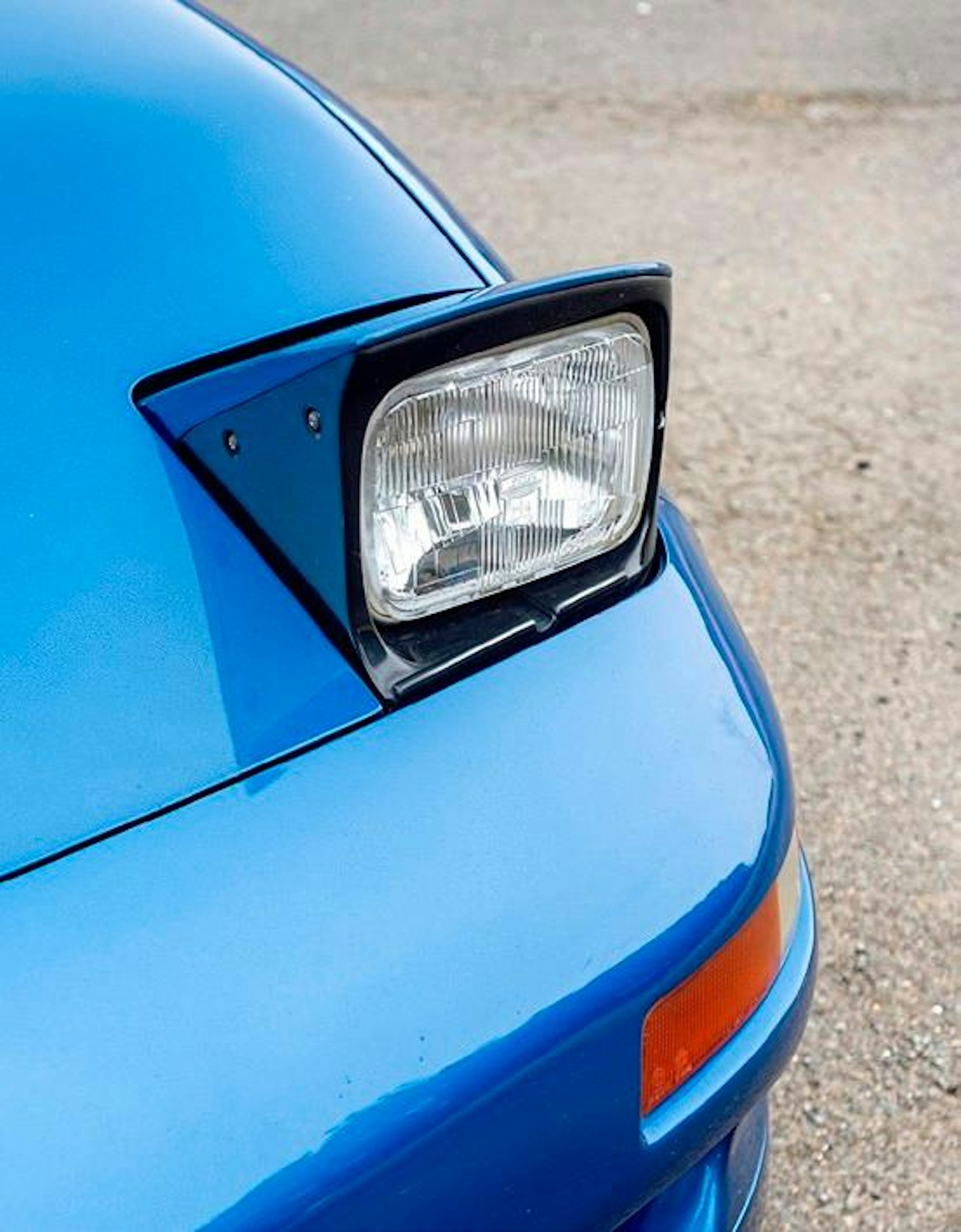
The last MR2 generation to boast pop-up headlights.
This car feels taught, but others may not be so lucky. Knocks and clonks from the suspension are a sure sign that the bushes have deteriorated, so it pays to check the history file to find out if polyurethane items have been fitted in the original rubber bushes’ place. It’s a worthwhile upgrade and should be well within the scope of a DIYer to carry out over a weekend or two. Then there’s the Toyota’s Achilles’ heel: corrosion. Badly rotted bodies, or those with bodged ‘MOT repairs’ will lose the stiffness for which the car was lauded at launch. Foam sound dampeners in the rear sills trap moisture, often leading to hidden corrosion. They’re often (and best) removed during a pre-emptive inspection and rust-proofing session, if it’s not too late. Check wheel arches too, inner and outer, as these are yet another hotspot for rot, while underneath, suspension stiffening brackets can rust rapidly, although aftermarket stainless replacements are available.
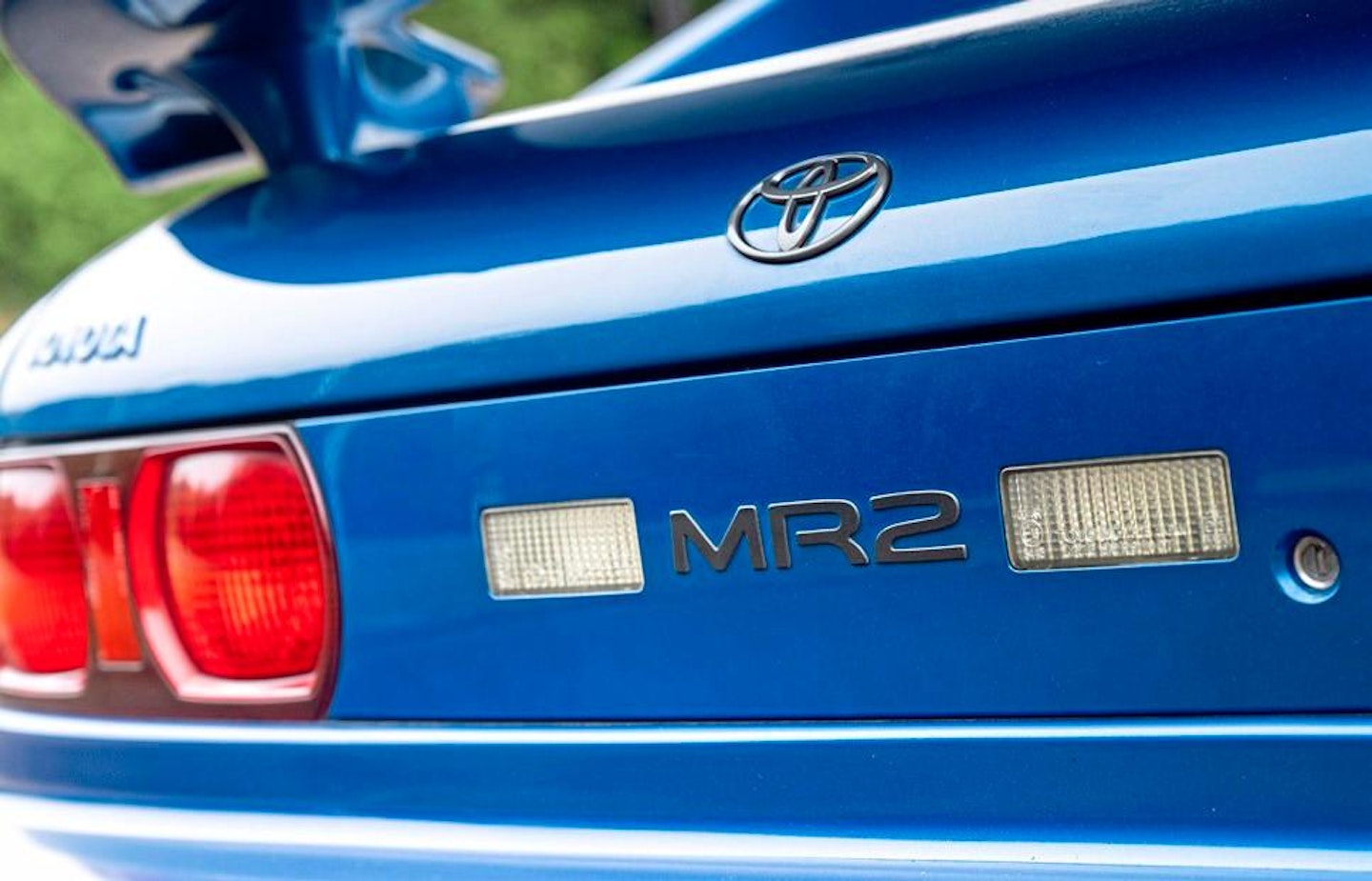
Still has rear boot space – just not for ice cream!
Find out if the cam belt has been changed recently – it should be done every 60,000 miles, but can be a fiddle due to access limitations. As always, it’s worth finding out what’s been done by a previous owner before going to view a car. It can tell you a lot about how it’s been cared for, and what restorative works may be required.
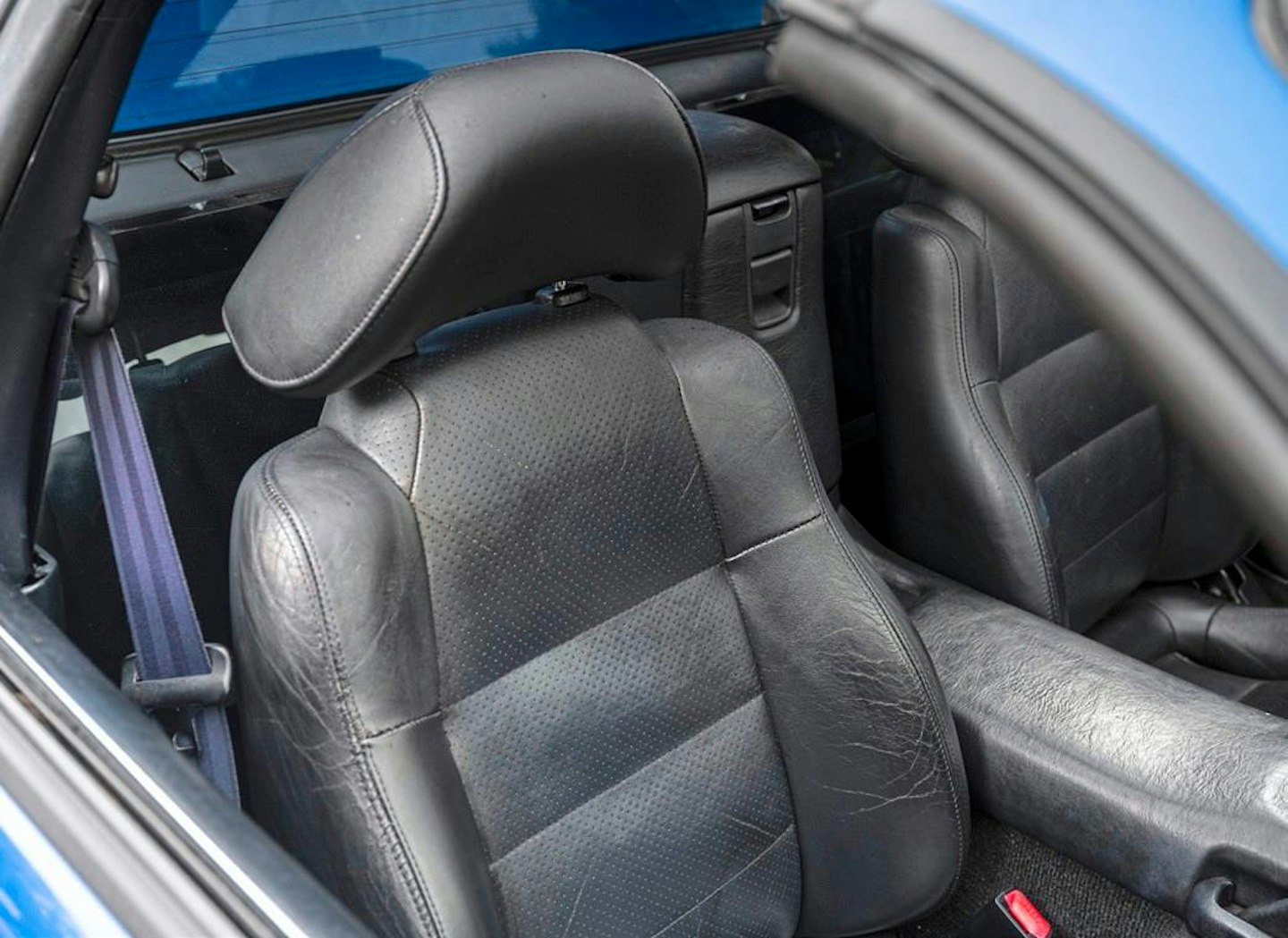
Seats hug you like a good sports car’s should.
TOYOTA MR2 HISTORY FILE
CRAIG CHEETHAM
There was a good reason why the Toyota MR2 ‘SW20’ looked like a mini Ferrari – its designer, Kazutoshi Arima, wanted to make it look like a scaled-down supercar. The MR2’s mid-engined, rwd layout suited that aesthetic and Arima pulled it off, creating one of the best-looking cars of the Nineties. The SW20 received a rapturous reception when it debuted late in 1989.
It also had a chassis that, while tricky on the limit, endowed it with pin-sharp steering. It enjoyed a 10-year production run, with only minor visible changes, most notably to the rear end styling in 1994. The first cars, introduced in 1990, came with a 2.0-litre engine developing 119bhp in standard tune or 158bhp in the flagship ‘GT’ model , the latter of which could also be ordered with a T-Bar roof. Unlike most convertibles, this was largely considered better than the coupes, because the additional bracing bars in the front and under the engine bay cover gave the car more torsional rigidity.
After a year on sale, some minor revisions were made – the 1991 car is known among enthusiasts as the Revision 2, or Rev 2 for short. Larger 15-inch wheels give it away, fitted to accommodate bigger brakes. It was replaced by Rev 3 in 1994 – lower bodywork was now body-coloured and a much larger boot spoiler was added.
Late 1995’s Rev 4 got clear indicator lenses, improved specification and new switchgear. The final model, the 1998 Rev 5, introduced a new version of the 3S-GE engine, with Variable-Valve Timing to develop almost 200bhp, with no notable impact on its already good fuel consumption.

The most fun you can have sat underneath a bar?
1996 Toyota MR2 2.0 GTi 16
Engine 1998cc/4-cyl/DOHC
Power 173bhp@7000rpm
Torque 137lb ft@4800rpm
Gearbox 5-speed manual
Top speed 133mph
0-60mph 8.2sec
Fuel economy 36.2mpg
Price new £22,597
Lotus Elise
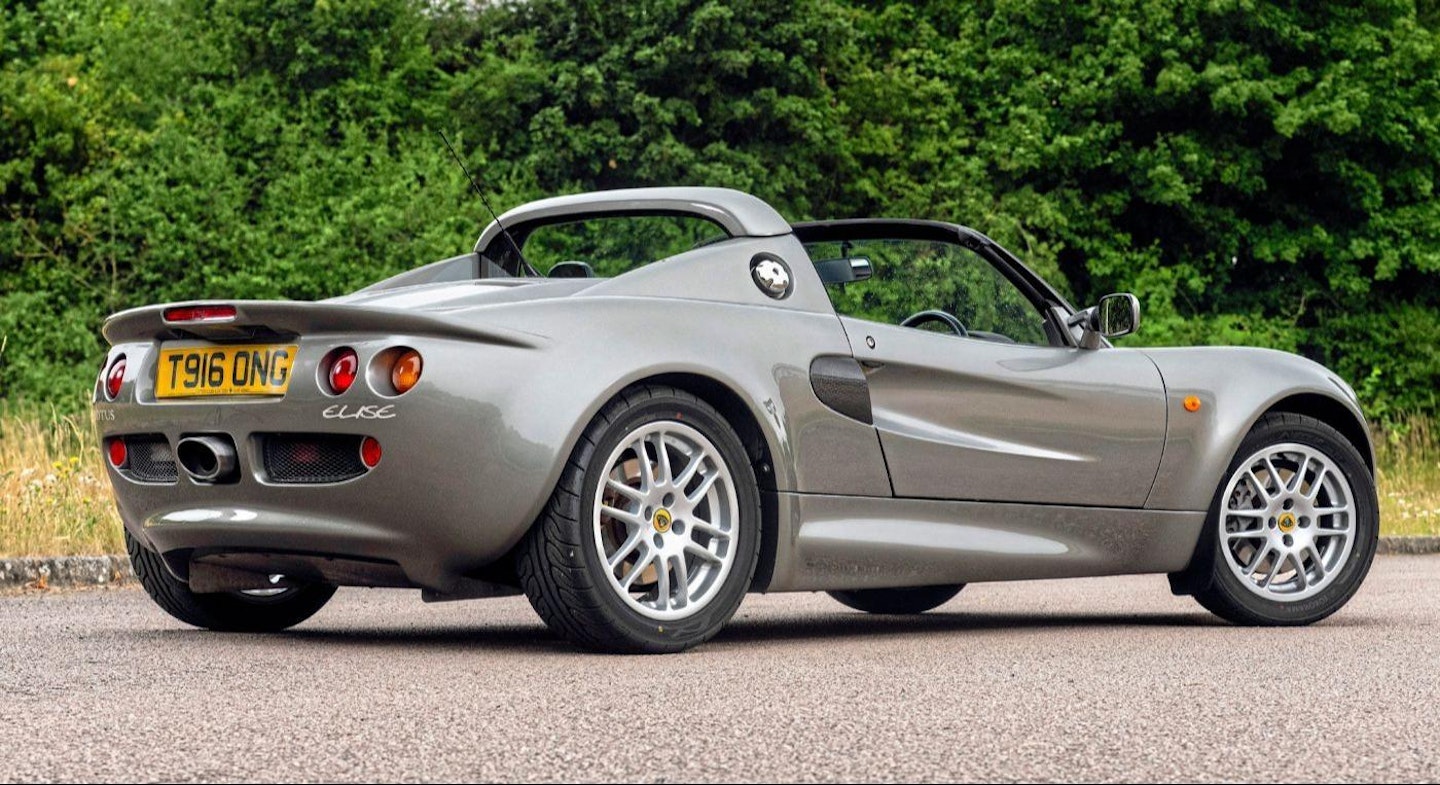
Designer Julian Thomson was inspired by the Ferrari Dino.
Where the MR2 channels the comfort of a grand tourer, with leather, wood and a decent stereo, the Elise as about as basic as it gets, with the Chapman ‘just add lightness’ ethos clearly evident. Lowering oneself into the low-slung seat, perched on the floor inches below the high, stiff sill line could not be a more different experience to the MR2’s ingress experience. Egress is even less elegant. The cabin in sparse and snug, but I’m not longing for a radio or even carpets. To butcher a quote by Leslie Nielsen, it’s an entirely different kind of driving, altogether…
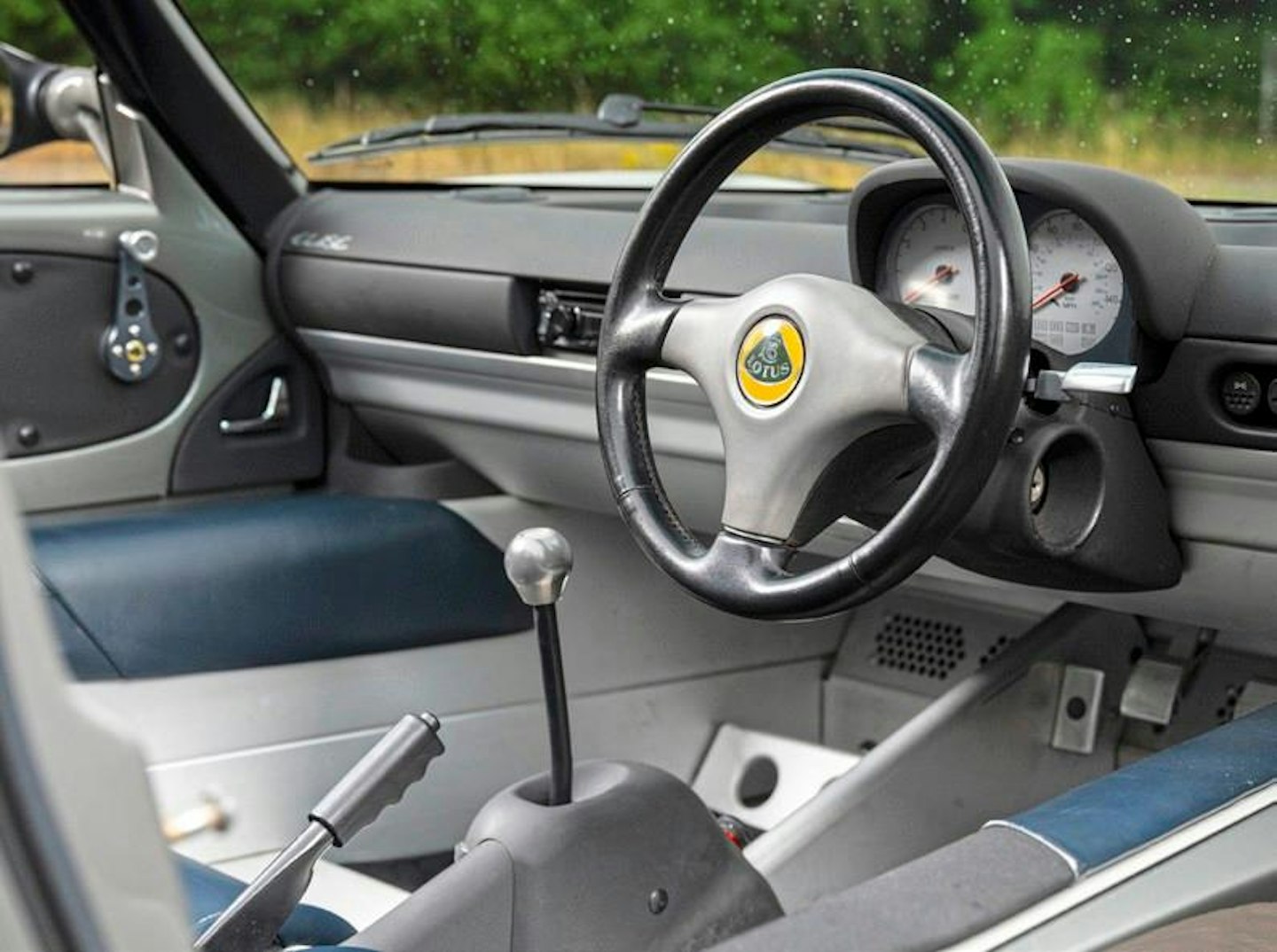
One of motoring’s great experiences. If you fit!
Our Lotus Elise may have the same mid-mounted 1.8-litre K-series engine as the MGF, but where the MGF was designed as a budget, everyday sports car, the Elise has been engineered for speed, lightness and apex-clipping. A track car for the road, the interior is sparse, driving position low slung and the roof requires the recollection of some boy scout tent-pitching techniques, but fire up the engine and the experience is immediately visceral. A glassfibre amphitheatre behind the driver’s ears amplifies the induction roar and exhaust bark, and as the revs rise it’s immediately obvious you’re sitting somewhere special.
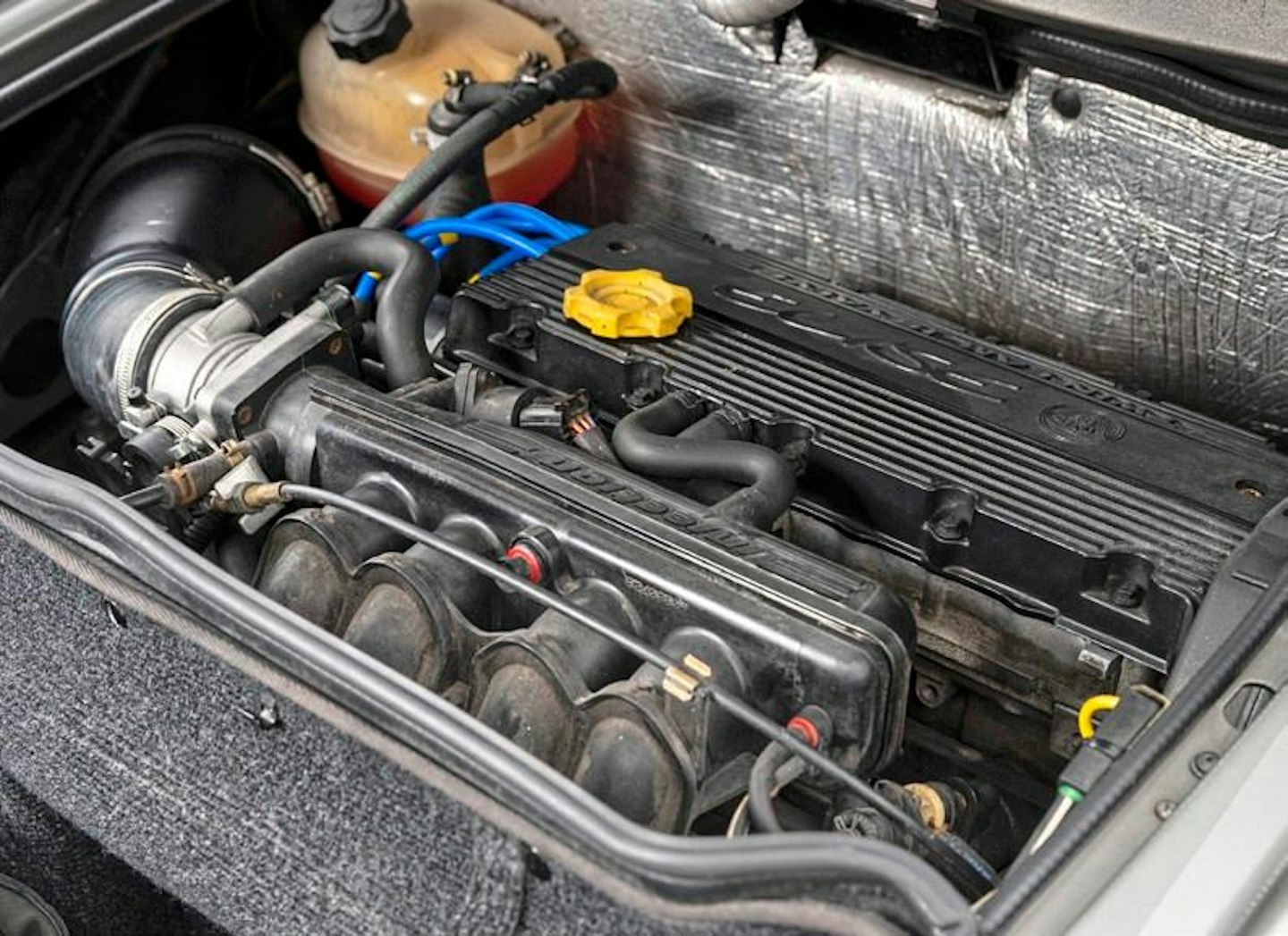
‘Only’ 118bhp, but still good for 0-60 in 6.1sec
Over a couple of speed bumps as we exit the car park where we’ve met for the day, my spine longs for the MGF’s Hydragas, however on the open road I’m pleasantly surprised by the Elise’s compliance. The lightness of that stiff, composite body and epoxy-bonded aluminium spaceframe allows the car to fly, and the aftermarket induction kit on this example provides an addictive roar under the right foot. This is a proper sports car, one where the driver is truly at one with the machine. I find myself focused, looking ahead and planning the next corner as if on a circuit, delighting in swapping cogs and hearing the exhaust bark from behind me. It’s a car that flatters, with handling truly out of this world on smoother surfaces.
Although it’s a little twitchy over bumps, the steering is so responsive that it doesn’t take much of an input to put you back on course.
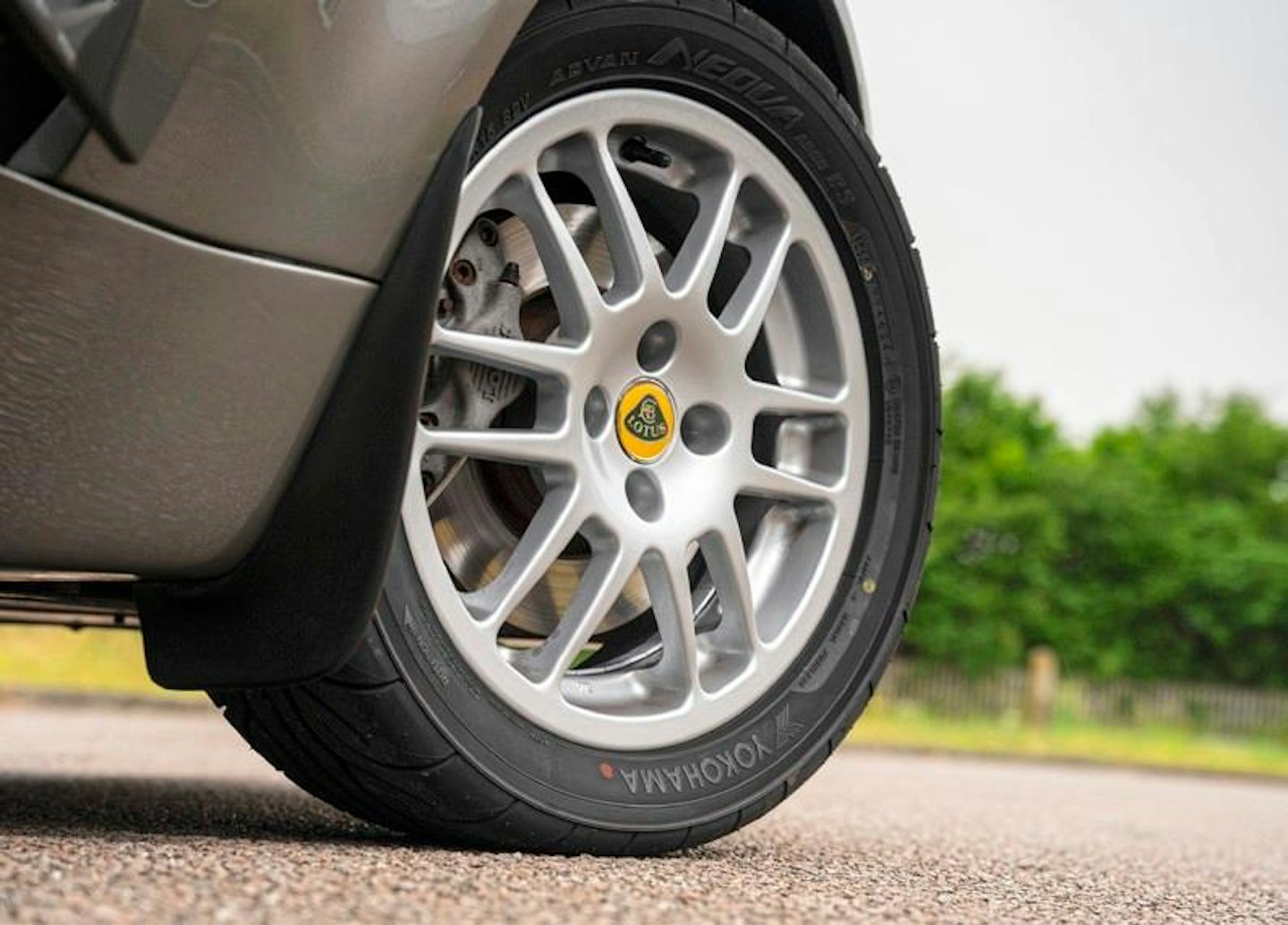
‘Staggered’ wheel setup: 15in front, 16 rear
I know, however, that if I push to hard, it will be me, not the car, which seals our fate. Many an Elise has flattered a driver who has subsequently run out of talent. That’s why it’s worth getting any prospective in the air, removing undertrays and inspecting the aluminium chassis carefully. New chassis are almost impossible to find, and Lotus says that they can’t be repaired, but specialists can normally fix them if things aren’t too serious. Remember that these are cars often driven hard on track, so an HPI check may not reveal everything, because fixes may have been carried out outside of an insurance claim.
The same engine checks as the MGF apply here, look for signs of head gasket failure and note that cam belts should be changed every 60k. That composite bodywork might not rust, but it can be prone to picking up stone chips and be tricky to repair. Check too for any signs of abrasion from gravel traps or armco – or evidence of shoddy glassfibre repair work. Front and rear clam shells are available, but cost £1000+ for each end.

Matt happily becomes one with the Elise.
LOTUS ELISE HISTORY FILE
CRAIG CHEETHAM
There’s always been something adorable about a small Lotus. After all, it’s how the brand began back with the Seven, while the original Elan was one of the finest sports cars of the Sixties and Seventies. The Elise expanded on that somewhat, taking founder Colin Chapman’s mantra of ‘simplify, and add lightness’ very much under its wing – something the previous front-wheel-drive M100 Elan had drifted away from.
The Elise wouldn’t have existed had it not been for the most unlikely of saviours – Swiss businessman and petrolhead, Romano Artioli, who also owned Bugatti. He bought Lotus from struggling General Motors in 1993, and his vision was to create a new, accessible entry level into the company’s line-up, where for a relatively modest premium over the likes of an MGF or Mazda MX-5, driving enthusiasts could have a sports car with slightly more prestige.
It used a glassfibre body sitting on an extruded aluminium spaceframe, which made it incredibly light – at just 725kg, it weighed only marginally more than the original Mini. It was rear-wheel drive, with the engine (a 1.8-litre Rover K-series) mid-mounted for optimal weight distribution. It was called the Elise after Romano Artioli’s daughter, but when Bugatti suffered huge losses, he ended up selling Lotus to Malaysian manufacturer Proton just weeks before the Elise made its debut.
It was a truly fantastic car to drive, with incredible grip and amazing steering, while its featherweight construction meant that it was remarkably quick, despite its modest power output form the standard 118bhp Rover engine, the same as an MGF 1.8i , but capable of 0-60mph in just 5.8 seconds.
As well as the standard 118bhp Elise, a faster model, called the 111S (named after the Elise being the 111th Lotus model) appeared, using the 143bhp VVC engine found in the MGF VVC, which gave it a 0-60 time of 5.0 seconds.
An S2 model came along in 2000, after Lotus formed a partnership with former owner GM to improve its crash structure (a move that also gave us the Vauxhall VX220 in return), while later models built from 2005-2011 had a Toyota engine in place of the K-Series, following the MG Rover collapse.
I OWN ONE IVAN TANG
I bought this car in 2021, but only got to see it for the first time in May this year, after moving to the UK. I love the looks, particularly in the titanium colour.
It’s pure, with no creature comforts. no cup holder, sun visor, or anything, just the car and the driver. The original Koni dampers were shot, so I’ve fitted a set of Bilsteins and it has an aftermarket induction kit, which sounds great!

Ivan’s Elise has proved well worth the wait!
1999 Lotus Elise 1.8i
Engine 1796cc/4-cyl/DOHC
Power 118bhp@5500rpm
Torque 122lb ft@3000rom
Gearbox 5-speed manual
Top speed 126mph
0-60mph 6.1sec
Fuel economy 39.4mpg
Price new £21,125
THE PC CONCLUSION…
Of the three cars here, the MGF undoubtedly represents the best value in 2025. It’s quick enough, comfortable, practical and – with sorted suspension and good tyres – handles beautifully. The MR2 wins hands down on practicality, two huge boots offering plenty of space for luggage – good job too as it’s the pick of the bunch for long-distance touring. The Elise is the dream car, astonishingly good looking and it sets the benchmark for handling. It’s simple, too, with those shared mechanicals and very little internally to go wrong. But is it too compromised to be able to truly enjoy it for more than just a few days a year? When it comes to sheer bang-for-buck and sheer usability, as its makers intended, the absurdly undervalued MGF has to take the top-spot this time. Happy birthday, MGF!
USEFUL CONTACTS
CLUBS MGCC MGF Register, mgfregister.org
MGOC, mgownersclub.co.uk
SPECIALISTS MGOC Spares, mgocspares.co.uk
Rimmer Bros, rimmerbros.com
USEFUL CONTACTS
CLUBS MR2 Drivers’ Club, mr2dc.com
SPECIALISTS MR2-BEN, 07940572209, mr2-ben.co.uk
USEFUL CONTACTS
CLUBS
Club Lotus, clublotus.co.uk
Lotus Drivers’ Club, lotusdriversclub.org.uk
SPECIALISTS
Elise Parts, eliseparts.com
Lakeside Engineering, lakesideengineering.com
Max500 Ltd., max500.com
PJS Classic and Race Cars, pjslotus.co.uk
QED Motorsport, qedmotorsport.co.uk
THE ALTERNATIVES
MAZDA MX-5
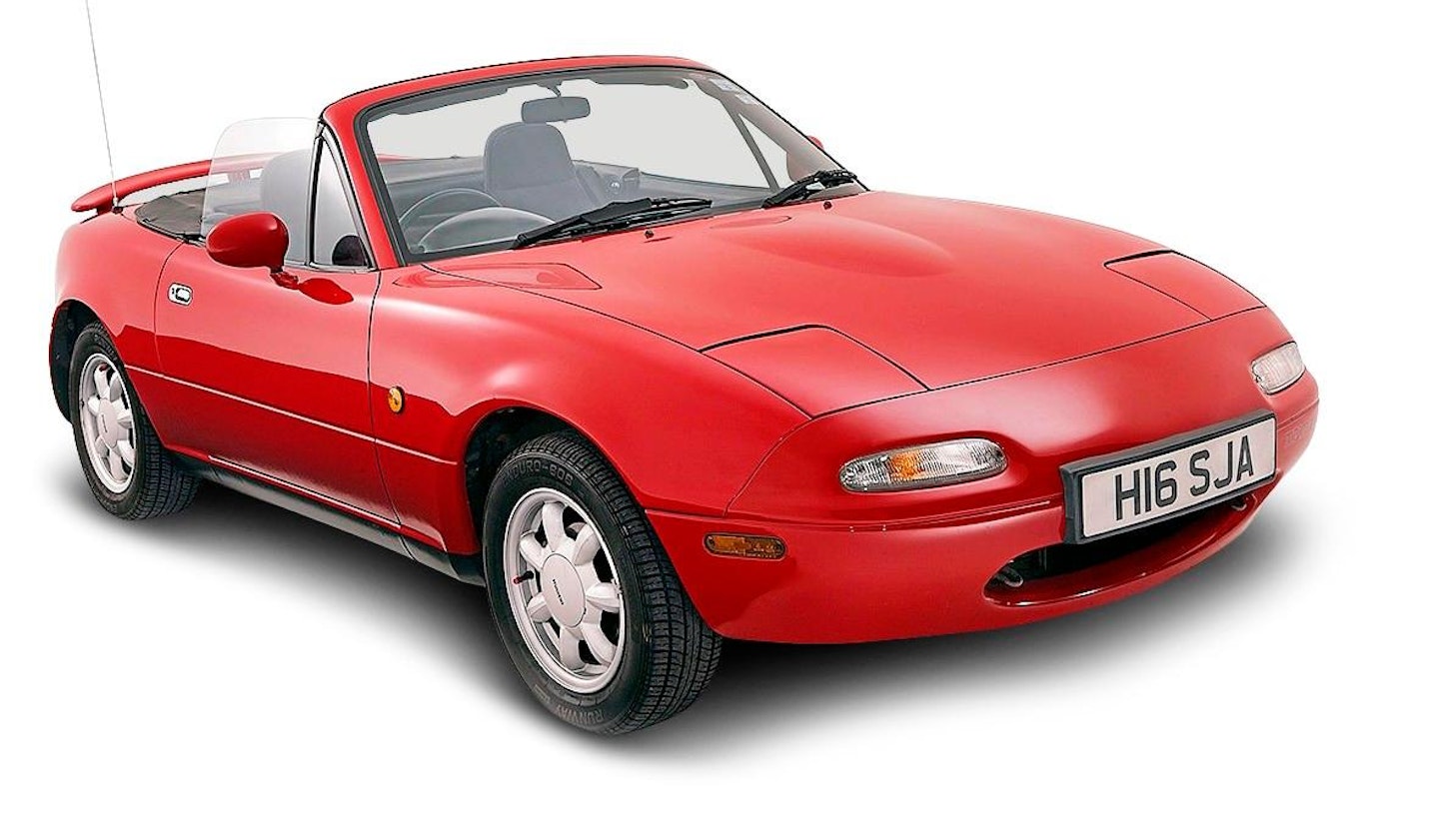
What would you have picked if, in 1995, you were angling for some topless two-seater fun? For the first time in ages the choice was wide and varied. If none of the three midengined motors we chose tickled your fancy, here are a few frontengined alternatives to tempt you – all of which are relatively affordable 30 years on.
The MX-5 was the car that kicked off the Nineties sports car boom. Created in the vison of the original Sixties Lotus Elan and unashamedly similar in appearance, the baby Mazda had a lively twin-cam engine, wonderfully snappy gearshift and fantastic handling. It reinvigorated the UK’s love for sports cars and became an enduring legend.
All MX-5s are wonderful cars to drive, but the MkI and MkIIs are the purest and arguably the most exciting. Watch out for rust, though. They’re mechanically robust, but rot can sneak in just about anywhere and, once it gets a hold, can quickly become terminal. It pays to buy the best you can afford, and keep it properly protected once you do.
MERCEDES-BENZ SLK
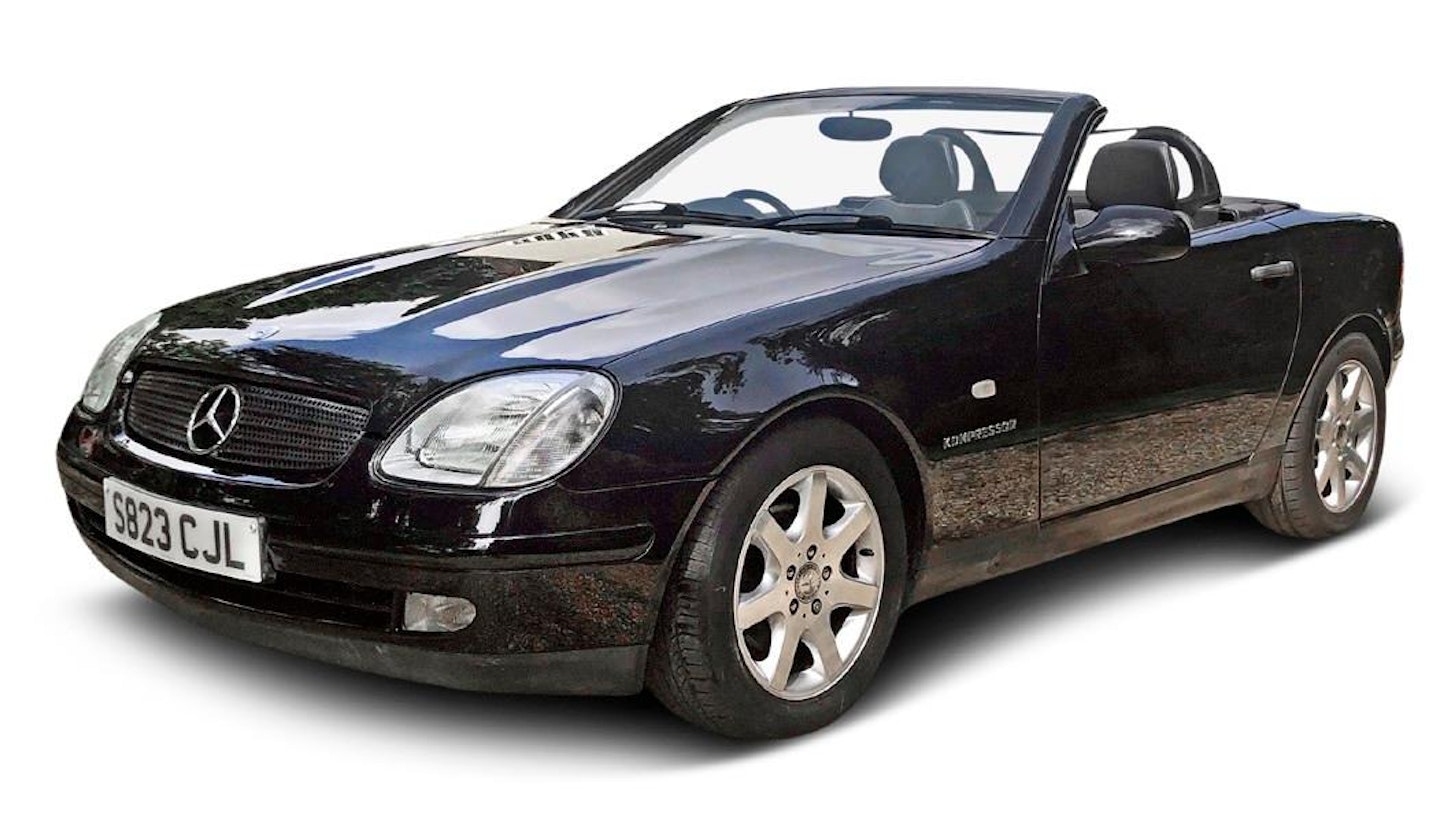
Previewed at the Frankfurt Motor Show in 1995, but not revealed in production form until the Turin show six months later, the SLK was a sports car that brought with it a new innovation. It’s power folding hardtop VarioRoof would set the precedent for a plethora of electric folding hardtops to follow, from its luxurious sister, the SL, to budget choices such as the Daihatsu Copen. It’s fair to say it was a true innovator.
It was cool, too – its mini-SL styling and a fascinating engine range that included supercharged four-cylinder units and a super-smooth 3.2-litre V6 gave it massive showroom appeal, leading to a long waiting list when new.
Mechanically, SLKs are pretty tough, but early cars suffered very badly from bodywork issues, as a result of moisture penetrating the water-based paint. Later examples are better but all can rust, especially around the front wings and lower body seams.
A good SLK, though, is a great modern-classic sports car.
FIAT BARCHETTA
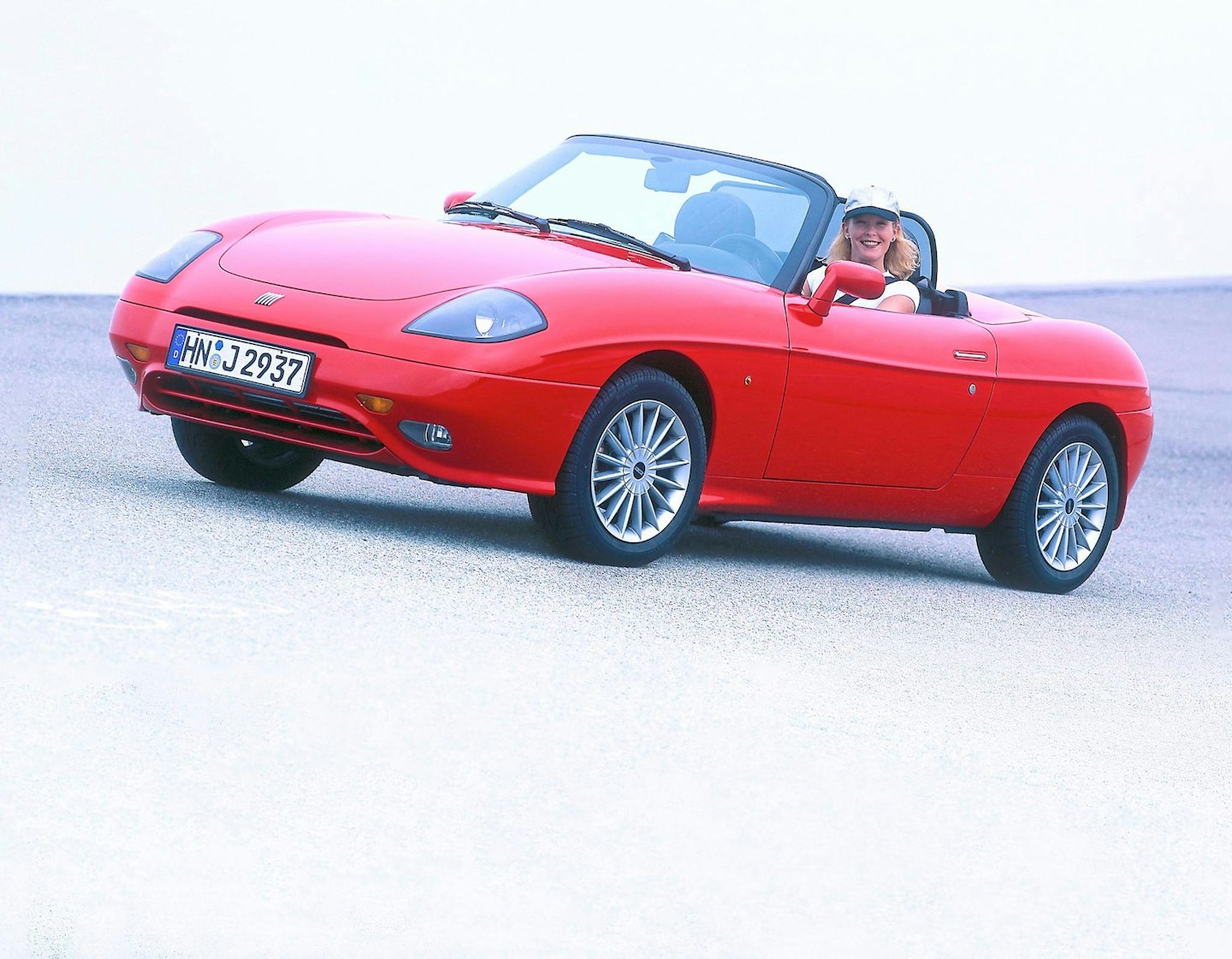
Smaller and lighter than its rivals here by virtue of being built on the platform of the Fiat Punto, as opposed to the Tipo Due chassis of the Alfa Spider, the Barchetta brought back a name from Fiat’s past.
It was a delicately styled and hugely rewarding-to-drive two-seater, built on Fiat’s behalf by coachbuilder Maggiora in Turin. It was never produced in the same volumes as its key rivals due to being hand-finished, and was only ever offered in left-hand-drive. UK imports were always in relatively low volumes. But those who bought one loved it, while the ‘scissor handle’ door levers were an art form in themselves.
The 1.8-litre engine, as found in the Punto Abarth, was also well-liked, and gave great performance in such a lightweight model. The Barchetta is a rare, unusual choice of modern classic roadster today, as well as one that’s an absolute joy to drive.
BMW Z3
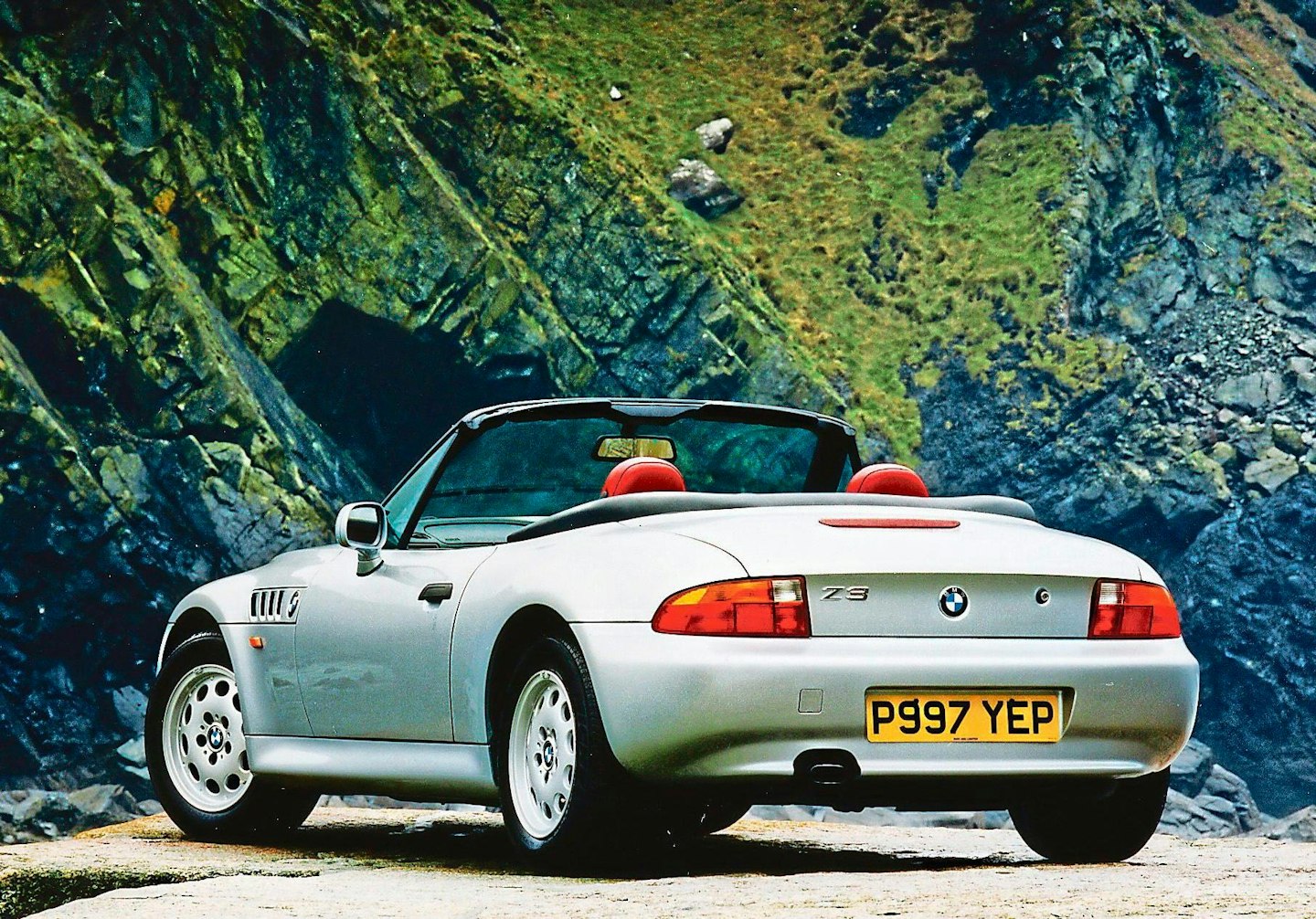
The Z3 almost meant that the MGF never appeared, after the German firm took over the helm at Rover Group while the new MG was in its final stages of development. So, too, was its own sports car, and luckily the decision was made to keep both. The BMW Z3 had been on the drawing board since 1991, a two-seater sports car developed off the E36 3 Series platform, and to be built in a new factory in the USA.
Like the MGF, it was rear-wheel drive but it had the engine in the front. While the six-cylinder models that were a lot more powerful (and consequently more expensive) than the ’F, there was also an entry-level with an 1895cc, 1.9-litre twin-cam four-pot developing 138bhp. A slight power advantage over the MG, offset by the BMW’s greater weight, which actually made it a bit slower off the mark. Nevertheless, it was an attractive proposition, with handsome styling by Japanese designer Joji Nagashima.
ALFA ROMEO 916 SPIDER

The Alfa Romeo 916 Spider was first seen in 1993, but it wasn’t until April 1995 that it went into production. The first right-hand-drive Spiders arrived four months later, weeks before the MGF. Mechanically, it was different to its rivals. It was built on a shortened version of Fiat’s ‘Tipo Due’ compact platform, which underpinned everythng from the Fiat Tipo to the Alfa Romeo 155. This meant it was front-engined and front-wheel-drive, to the dismay of purists.
Nobody sniffed about what was under the bonnet, though; the two engine choices were sublime. There was a V6 for the premium market – the classic 3.0 Alfa Romeo ‘Busso’– but, for those on a tighter budget, there was also a 2.0-litre Twin Spark four-pot, which used two plugs per cylinder to aid responsiveness. The 150bhp unit also sounded fantastic. Then there was the styling, which is something Alfa rarely gets wrong and certainly didn’t on this occasion.
HONDA CRX DEL SOL
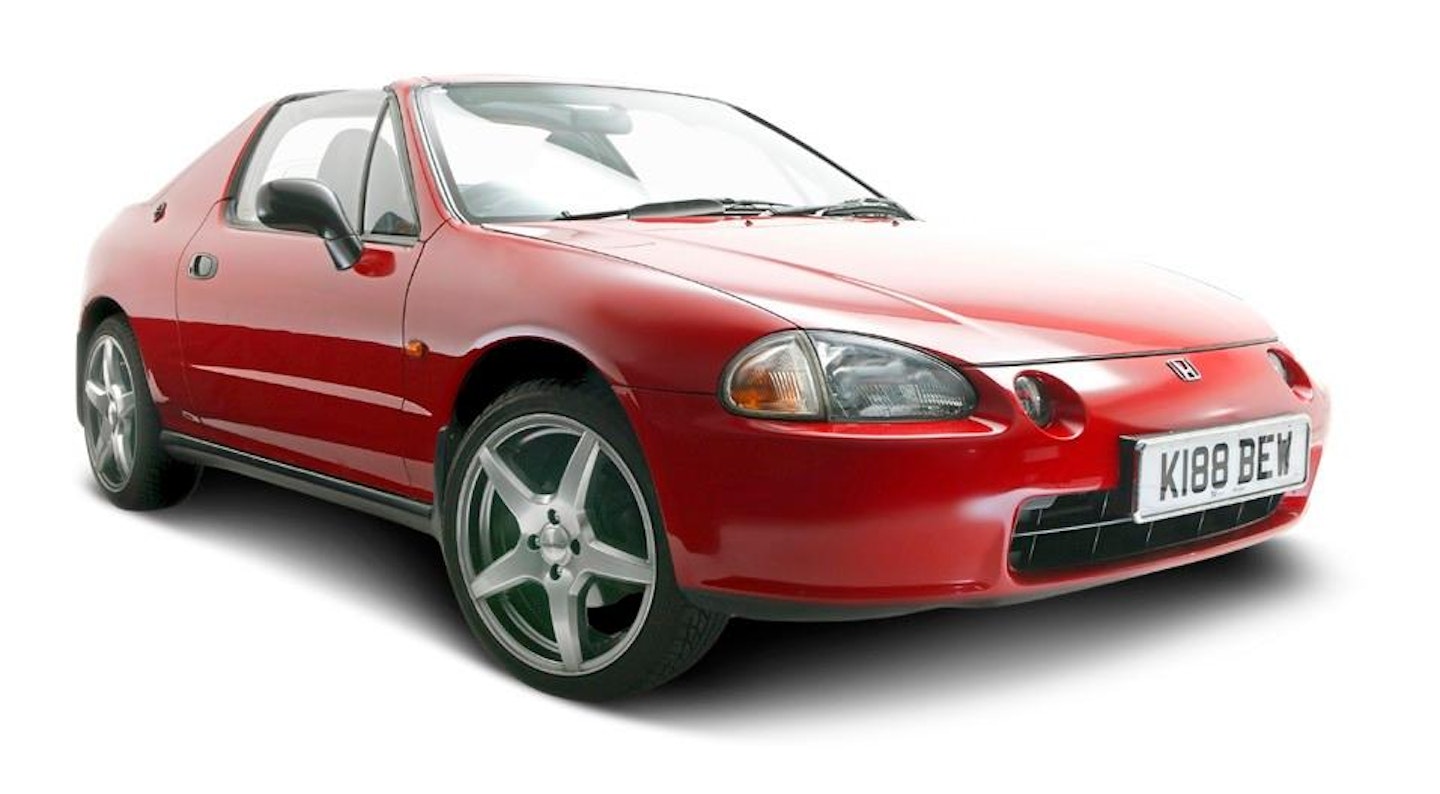
The second Honda CRX to be sold in the UK, from 1992 to 1998, was a very different car to the two-door coupé that preceded it, the Del Sol monicker referring to its removable targa top panels that allowed for open-top motoring.
Its appearance echoed that of the mid-engined models that were fashionable at the time, but under the skin there was nothing mid-engined about it. It used the platform of the contemporary civic, powered at first by Hinda’s D15 1.5-litre engine and then later by the twin cam D16 1.6-litre unit, both of which were lively yet frugal and came with VTEC variable valve timing, meaning peak power didn’t arrive until after 6000rpm. As well as the striking looks, the Del Sol was also well-equipped, with cruise control as standard on most models.
Today, they’re rare because UK models were badly affected by rust – most survivors are Japanese imports known as Del Sol, without the CRX.
Subscribe to a PC Print+ Subscription today and you'll get instant digital access PLUS FREE UK delivery so you'll never miss an issue again. Check out our offers today.
